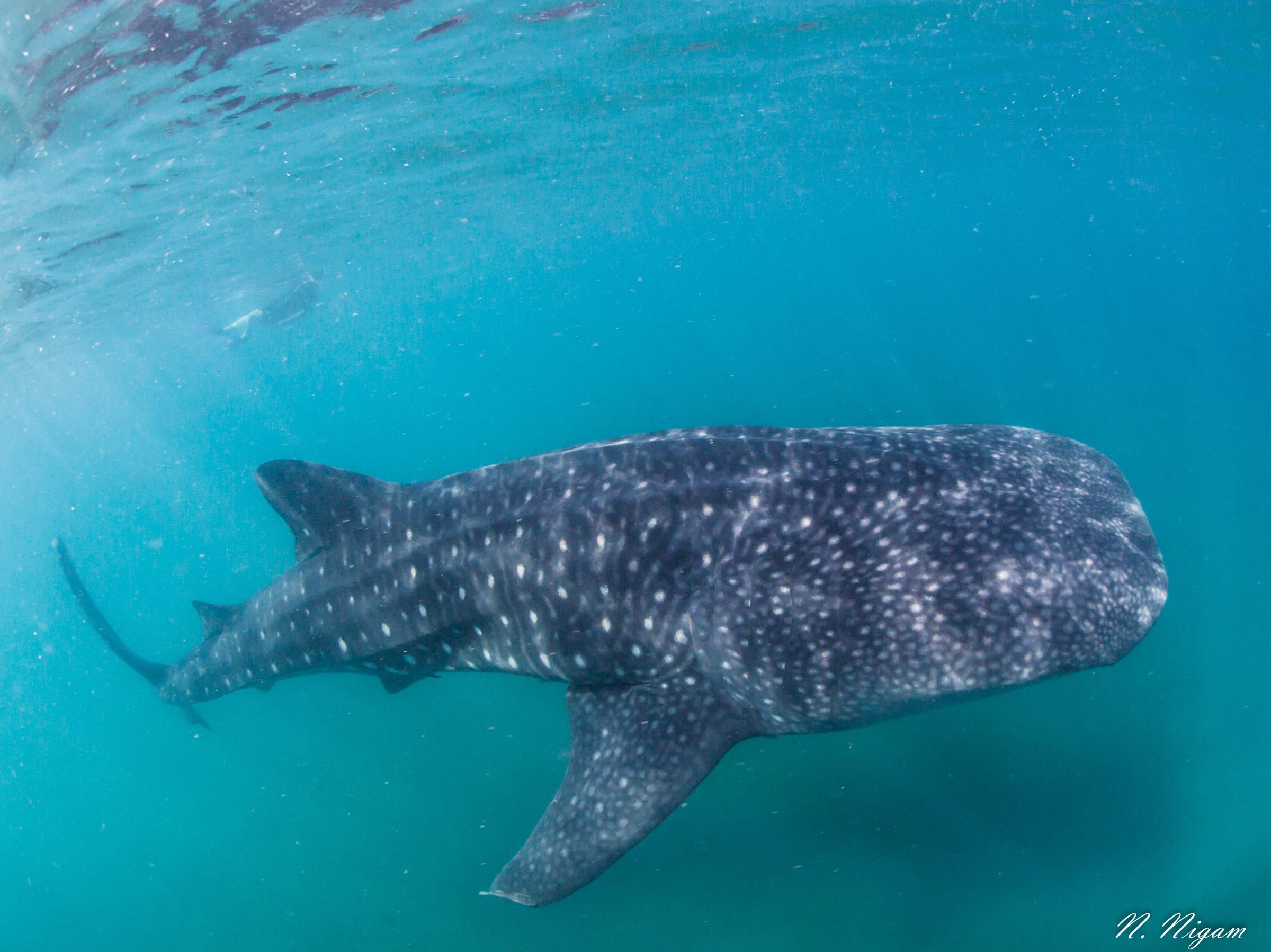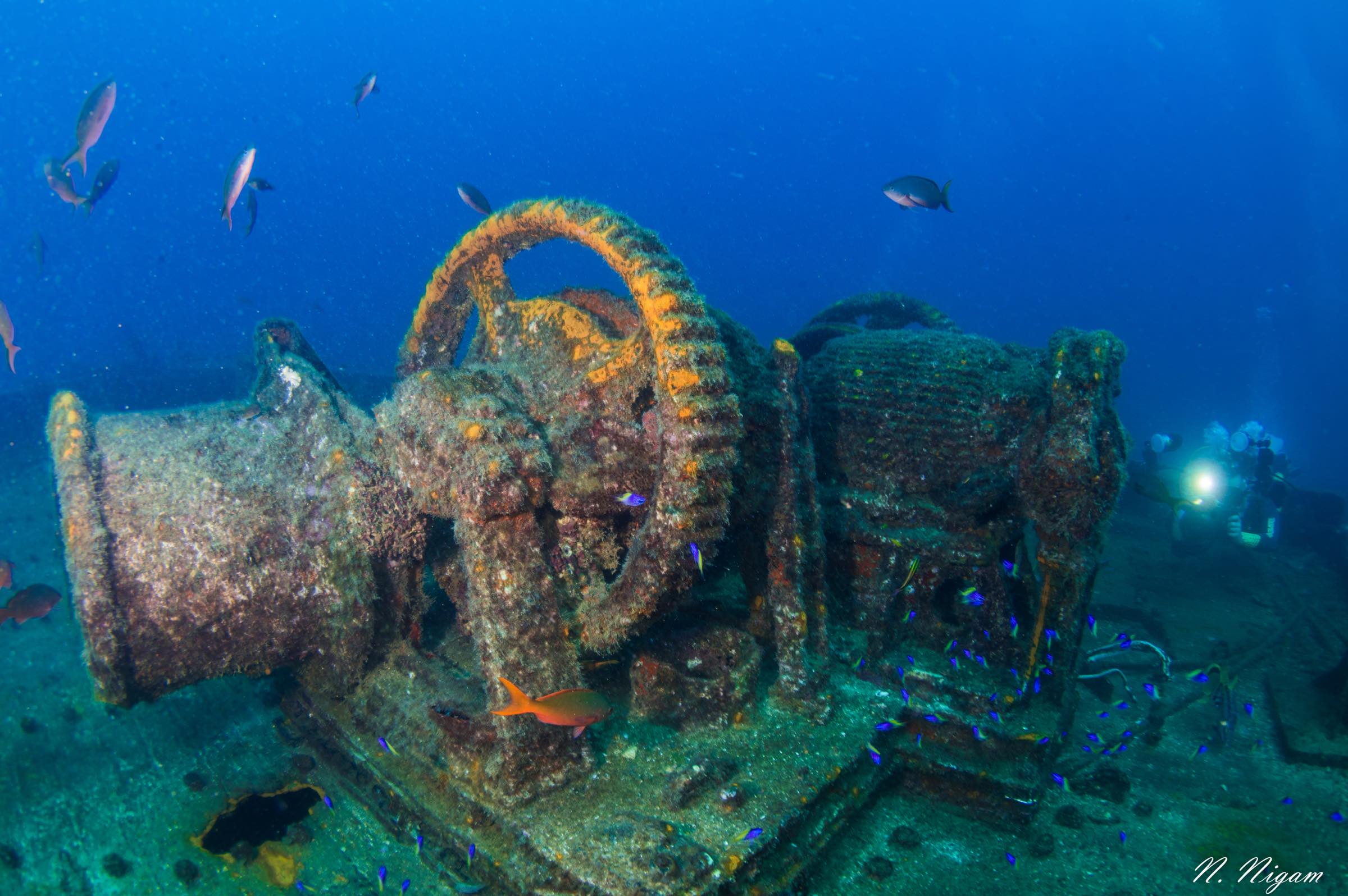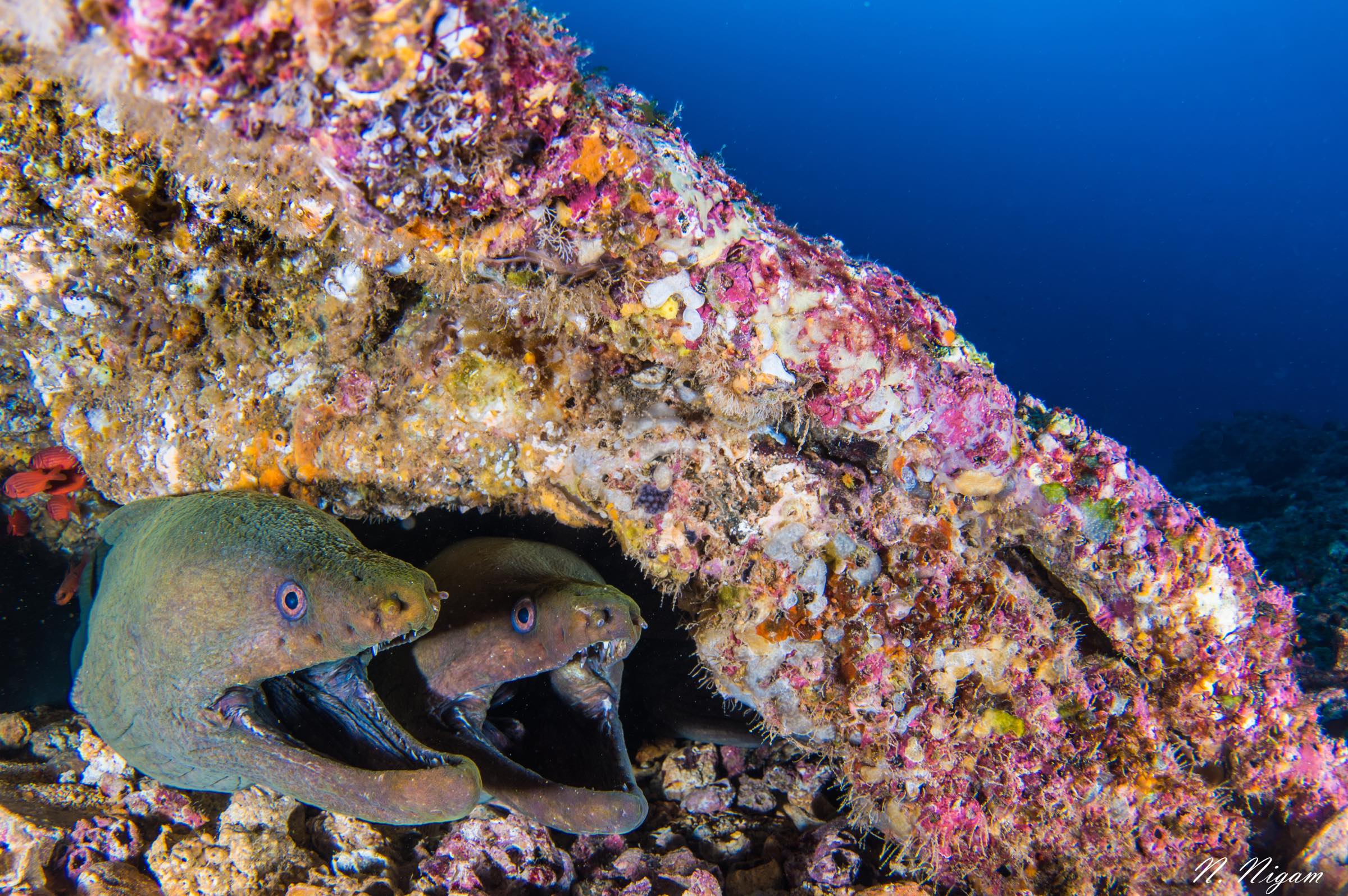Only a short hop from the US, La Paz is an exciting tropical dive destination offering colorful and varied experiences for all levels of divers. Located on the eastern side of Mexico’s Baja California Peninsula, the town and surrounding islands offer unique access to a wealth of marine life in both the Sea of Cortez and the Pacific Ocean, so much so that La Paz is often referred to as ‘the aquarium of the world’. And what’s more, many of the area’s best spots can be enjoyed by snorkelers too, making it ideal for a family or group vacation.
Words by Gillian Flaherty and photos by Nirupam Nigam
Whether you visit La Paz as an avid diver, a nature enthusiast, or a novice snorkeler, the local sites won’t disappoint. Here are some of the awesome dive and snorkeling spots you can explore on a vacation to La Paz.
Whale Sharks in the Bay of La Paz
Every year in October and November, scores of huge whale sharks migrate into the Bay of La Paz to feed on plankton blooms. Spotting a single one of these massive fish is normally a rare treat, so seeing them in such numbers at La Paz is a sight to behold. Interacting with these giant filter feeders is only permitted through licensed operators and access is tightly controlled, allowing a limited number of snorkelers and swimmers in the water with a shark at any one time.
Because the whale sharks in La Paz are not fed by humans, as is the case in other parts of the world, they show very little interest in swimmers and snorkelers, instead displaying completely natural feeding behavior which is fascinating to observe. The plankton that attracts so many of them makes for soupy green water and dramatically reduced visibility, but this only adds to the mystery and excitement of the experience. As well as whale sharks, schools of mobula rays often enter the bay to feed. Spending time in the water with La Paz’s whale sharks is an extremely humbling and rewarding experience that is difficult to forget.
Los Islotes Sea Lion Colony
On the northern tip of Isla Partida, just north of La Paz, a huge California sea lion rookery is one of the area’s most popular wildlife attractions. Snorkeling and diving with these inquisitive creatures is great fun, and while sea lions often pop up at many of the dive sites around La Paz, Los Islotes is the center of the action. Two rocky promontories provide the perfect setting for pups and yearlings to play hide-and-seek with each other and visiting divers. Their boisterously mischievous antics are a joy to behold, showing off like cheeky children clamoring for attention. The sea lion colonies have been visited by divers and snorkelers for many years, and the residents are well accustomed to playing with visiting tourists.
The shallow nature of the site makes this the perfect spot to snorkel with sea lions, and the clear visibility means their games can be enjoyed just as easily from the surface. While the sea lions are the stars of the show, also expect to spot large shoals of sardines, angelfish, and surgeonfish above the rocky reefs.
Pelagic Action at El Bajo Seamount
A site more suited to experienced divers, El Bajo is a group of three offshore seamounts some 20 miles to the north of La Paz. Its open ocean location makes El Bajo a magnet for passing pelagic species, however, divers can also discover a great variety of resident reef fish and critters. Steep drop-offs, canyons, deep walls, and brisk currents make diving here exciting but challenging, and spotting a passing whale shark or manta ray is not uncommon.
However, El Bajo is most famous for its schooling hammerhead sharks, sometimes numbering in their hundreds on the edge of the deep blue. El Bajo is one of the few places in the world where hammerheads can be found in such numbers, and it is also one of the most accessible. As well as these awesome sharks, expect to spot open ocean gamefish such as tuna, wahoo, and schooling amberjack, and octopus, eels, and various crustaceans hidden amongst the cracks and crevices of the reef.
A Trio of Wrecks at Swanee Reef
Just offshore on the southern tip of Isla Espirito Santo, the treacherous rocks that mark the northern passage of the San Lorenzo Channel are home to three shipwrecks, and all of them are accessible to divers. Known as Swanee Reef, below the waterline this tropical ecosystem seems anything but deadly, huge coral heads and gorgonian forests creating a haven for shoals of small rainbow-colored fish and plenty of macro. However, the scars where these ships have met their fate are still visible, and divers can explore a fascinating combination of reef and wreck over several dives.
The most popular dive is the wreck of the Salvatierra ferry which sank in June 1976, before being damaged beyond salvage by Hurricane Liza three months later. She now lies in around 60 feet of water and is a thriving artificial reef full of fish life. Where her superstructure has been ripped open, many of the cargo trucks are still visible, as are both propellers. On the western side of Espirito Santo, the wrecks of the Fang Ming and C59 were both intentionally sunk in around 70 feet of water to create artificial reefs and exciting diving for La Paz’s visiting divers. Both wrecks have been properly cleaned and opened up to provide a safe environment for enthusiastic wreckers, and because they lie so close together, they are often dived consecutively.
La Reina’s Resident Manta Rays
La Reina is a stunning site offering breathtaking underwater topography and beautifully scenic diving around 2-hours boat transit from La Paz. Located off the northern tip of Isla Cerralvo, this shallow site is home to a small colony of sea lions, but more importantly, giant pacific manta rays. Sadly, the mantas disappeared from La Reina for almost 15 years, thought to be the result of illegal fishing for the Chinese medicine market. However, in 2016 and 2017, mantas were intermittently spotted around La Reina, and in 2018 more than 11 different manta rays were identified at this iconic site.
The relatively easy diving, great visibility, and bright blue water create an ideal backdrop for manta encounters as they visit cleaning stations along the reef. Bright corals and dozens of tropical fish and turtles complete the scene, and diving here is a highlight on any La Paz trip.
When to visit La Paz
A wealth of marine life can be discovered in La Paz’s waters year-round, however, if you are hoping to spot specific species you will need to plan your visit accordingly. Water temperatures are warmer (averaging 80oF) and visibility tends to be better from June through to November, and the winter months bring cooler water temperatures (averaging 72oF) and potentially rougher surface conditions. Likewise, surface conditions are hot and humid during the summer, with more rain towards the end of the season, whereas December to May is cooler with bright sunny days and very little rain. This is also peak tourist season when resorts and beaches can become crowded.
Whale Sharks start arriving in La Paz Bay in October and stay for most of November. They follow the plankton blooms so visibility will likely be reduced if you are hoping to swim with them. La Paz Bay is closed for whale shark swimming from 1 May and is only opened once a certain number of whale sharks arrive. This is historically at the start of October, but has been getting later in recent years.
Hammerhead sharks and whales are more likely to be spotted in the winter months when the water is cooler.
Sea lions are present in La Paz year-round, however, the colonies are closed to visitors from 31 June to 1 August each year for the breeding season.
Manta Rays are most commonly spotted around La Reina between July and October.




